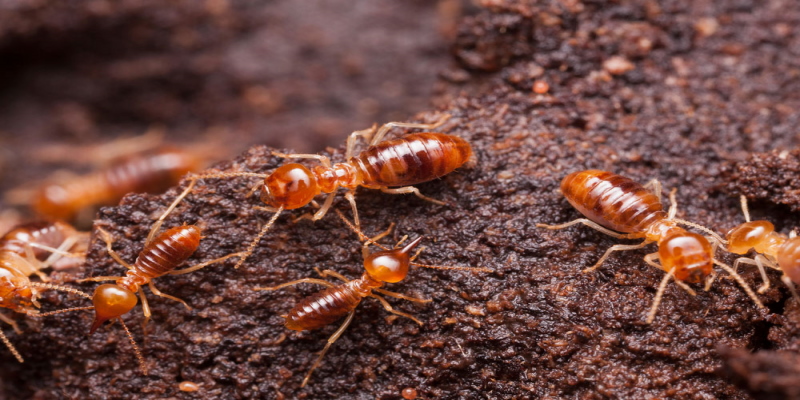
When termite swarmers show up, they’re more than just a nuisance—they’re a warning sign of deeper trouble. Learn what their presence really means, and how to stop the damage before it spreads beneath your walls.
The Warning Wings You Shouldn’t Ignore
You’re enjoying a quiet afternoon when you spot what looks like a flurry of tiny flying insects near your window. At first glance, they might seem like harmless gnats or ants. But look closer—those delicate wings and soft bodies could belong to termite swarmers. And if they’re inside your home, it’s time to pay attention.
Termite swarmers are reproductive members of a termite colony. Their sole job is to leave the nest, find a mate, and start new colonies. If you’re seeing swarmers indoors, it could mean one of two things: there’s already a mature termite colony inside your walls, or one is about to begin.
Either way, you’ve got a problem—and the longer you wait, the worse it gets.
When One Bug Means Thousands: Why Swarmers Signal Serious Trouble
A single termite swarmer isn’t the issue. It’s what it represents. A mature colony produces hundreds to thousands of these winged insects when it’s ready to expand. And unlike pests you can just squash and forget, termites cause billions in structural damage annually—often undetected until it’s too late.
Here’s what makes termite swarmers so dangerous:
- They indicate an established colony. Termites don’t swarm until the colony is mature, which can take 3–5 years.
- They’re looking to spread. Swarmers exist solely to reproduce and create new nests—possibly in different parts of your home.
- They’re silent destroyers. While you don’t hear or see termites eating, they’re busy hollowing out wood from the inside, weakening beams, joists, and supports.
One of the most unsettling parts about swarmers is how easy it is to miss the warning. Many homeowners sweep them up or vacuum them without thinking twice—never realizing those wings were a red flag for deeper, hidden destruction.
Case Study: Queens Homeowner Catches the Clue Just in Time
In Forest Hills, Queens, a family contacted a pest professional after spotting dozens of flying insects inside their sunroom one spring afternoon. They assumed it was an early mosquito swarm, but something about the wings made them pause. The technician who arrived quickly confirmed their fears: termite swarmers.
A deeper inspection revealed that an older wooden window frame had been compromised. Moisture from an aging roofline created ideal conditions for a subterranean termite colony to thrive unnoticed for years. The swarmers had emerged through cracks in the wall and were attracted to the light.
Using localized treatment and structural repair, the infestation was brought under control. But had the family waited—or dismissed the swarmers entirely—they could have faced tens of thousands of dollars in hidden damage. Now, they’re on a preventative schedule with seasonal inspections and baiting stations around the perimeter.
Their story is a textbook example of why residents searching for “termites control near me” aren’t overreacting. They’re responding to an early warning system that could save them thousands.
What Makes Swarmers Different from Ants?
A common source of confusion is mistaking termite swarmers for flying ants. Here’s how to tell them apart:
- Wings: Termites have two pairs of wings that are equal in length. Ants have larger front wings.
- Waist: Termites have straight waists; ants have pinched waists.
- Antennae: Termite antennae are straight and beaded, while ants’ are elbowed.
If you’re unsure, collect a few of the insects in a jar and show them to a professional. Don’t rely on guessing—your home’s integrity depends on the right ID.
What to Do If You Spot Swarmers
First things first—don’t panic, but don’t ignore them either. Here’s what you should do:
- Take photos or collect specimens. This helps confirm they’re termite swarmers and not flying ants.
- Check for other signs. Look for mud tubes on walls, blistering wood, discarded wings near windows, or hollow-sounding wood.
- Call a professional immediately. Time is critical when it comes to termites. Searching online for “Termite control Queens NY” can connect you with experts who know the local pest challenges and building materials.
While DIY methods might help with surface-level pests, termite control requires targeted solutions—and fast action.
Professional Solutions: Why Local Expertise Matters
New York’s varied architecture—from pre-war brownstones in Brooklyn to basement apartments in Queens—creates different termite pressure points. Older buildings are particularly at risk due to aging wood structures and moisture-prone basements.
Professional termite control includes:
- Thorough inspections: Technicians use moisture meters, infrared tools, and years of experience to detect hidden colonies.
- Targeted treatments: Depending on the severity, solutions may include baiting systems, liquid termiticides, or direct injection into affected wood.
- Prevention plans: After removal, regular monitoring and moisture management are key to keeping termites from coming back.
If you’re in a dense neighborhood or share walls with another unit, professional pest control isn’t just smart—it’s essential. Termites don’t recognize property lines, and once they’re in one building, they can easily spread to others.
Why Timing Is Everything
Spring is swarm season, but termite damage can happen year-round. If you spot swarmers inside your home—even once—it’s time to act. Termites cause slow, silent damage that snowballs over time. By the time wood starts to sag or crumble, the structure beneath has often already been hollowed out.
And when it comes to property value, home inspectors will flag even past termite activity. Early treatment can prevent costly damage and protect your investment long-term.
Don’t Wait Until It’s Too Late
If you’ve seen winged insects indoors this season, don’t dismiss them. They might be the only visible sign of an infestation that’s already compromising your home’s structure. Acting early is the difference between a simple treatment and major reconstruction.
Call a trusted expert, ask about termite inspection services, and take the guesswork out of protecting your home.
Looking for expert help with termite issues? Reach out now and let local professionals handle the threat before it spreads.
📱 +1 718-427-6200





